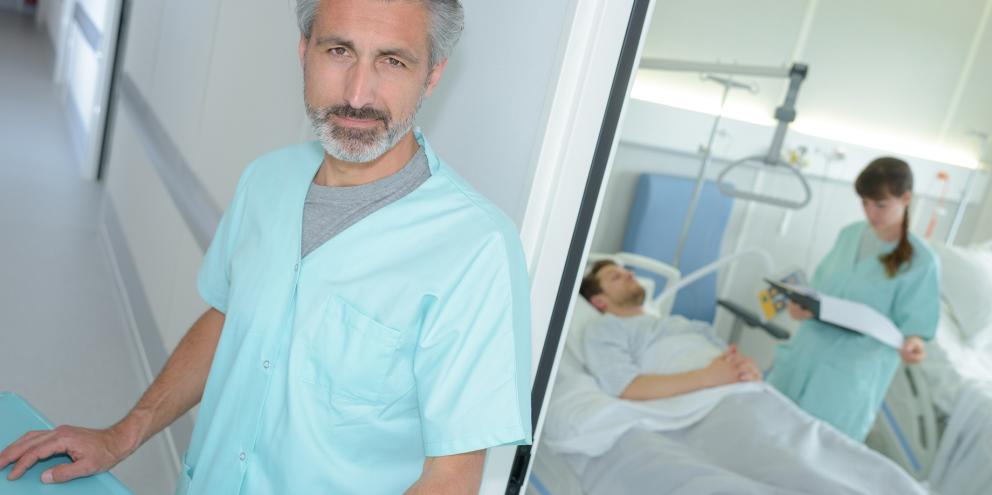
During the perioperative period, patients pass through a complicated and intense set of checkpoints and screening procedures designed to increase safety while maximizing the effectiveness of the surgical procedure being performed. Over 230 million major surgical procedures are performed every year worldwide with the vast majority representing minor low-risk procedures.1 In a large study conducted in the United Kingdom it was discovered that more than half of all in-hospital deaths occurred on the wards rather than in the intensive care unit (ICU).2 This unexpected finding was confirmed in an even larger investigation looking at mortality after surgery where 73% of patients who died prior to discharge did so on the wards.3 This same study also showed that death rates were 1000 times higher in the post-operative period than during surgery itself.3 These deaths represent failures to rescue patients in this critical period.
Dr. Frederic Michard, MD, PhD, is a leading voice for patient safety and has become a champion for developing new technologies aimed at preventing postoperative complications. Failure to rescue after surgery is defined as death following an unexpected post-operative complication. In a recent interview, Dr. Michard stated,
“While hospitals may have similar post-surgical complication rates, they often have different postoperative mortality rates. This difference comes from each hospital’s ability to detect and treat these complications in a timely manner.”
Early detection of deterioration is the key to preventing failure to rescue
The majority of patients do not suddenly deteriorate. In most cases vital signs trend toward abnormal ranges hours before a cardiac arrest or an ICU transfer.4 In reference to a study done by Sun et al., Dr. Michard informs us that up to 90% of low blood oxygen saturation events may be missed when vital signs are measured every 4 hours.5, 6
When asked how failure to rescue can be prevented, Dr. Michard stated, "I believe that continuous monitoring on wards will enable the early detection of clinical deterioration."
Studies have already shown that continuous monitoring on the wards can prevent serious adverse events such as cardiac arrest, ICU transfer and death by spotting early deterioration.7
While the evidence supports continuous monitoring on the wards following surgery, Dr. Michard believes that we cannot just use the monitoring systems we are using in the operating room and the intensive care unit, but that new technologies specifically developed for the wards are needed.
Typically vital signs such as heart rate, blood pressure, respiratory rate, temperature, and oxygen saturation are measured at nursing spot checks on the ward. Dr. Michard points out that the ability of any vital sign to predict clinical deterioration depends on the clinical context.8, 9 A study conducted by Dr. Michard and colleagues found that the most common postoperative complications fall into respiratory and infectious events, emphasizing the importance of monitoring respiratory rate, oxygen saturation, heart rate, and temperature.10 Utilizing machine learning methods for predicting clinical deterioration in more than a quarter-million ward patients, Churpek et al. found respiratory rate had the greatest predictive power, followed by heart rate, systolic blood pressure, temperature, and oxygen saturation.11
When asked what specific events can be prevented through continuous monitoring, Dr. Michard stated,
“It is important to understand that continuous monitoring does not prevent postoperative complications, but helps to detect them at an early stage. Assuming an early intervention follows the detection, then it becomes possible to prevent arrests and ICU transfers.”
Dr. Michard went on to describe how continuous monitoring will allow clinical teams to help patients before it is too late through earlier detection of deterioration.
Finally, Dr. Michard stated that several wired monitoring solutions have been shown to decrease post-operative events. The wireless solutions that are needed to keep up with ambulatory patients are new to the market and in need of clinical evaluations showing their effectiveness and cost efficiency.
The potential exists to not only save a significant number of lives but also to prevent costly intensive care admissions, reduce hospital length of stay, and in turn increase cost effectiveness. Dr. Michard’s work on patient safety shines a bright light on a significant problem while also illuminating the way forward. Emerging technology will make these goals a reality in the not so distant future leading quite possibly to a revolution in post-operative monitoring and safety.
References
- An estimation of the global volume of surgery: a modeling strategy based on available data. Lancet. Last accessed 11/25/2019.
- Incidence and outcome of in-hospital cardiac arrest in the United Kingdom national cardiac arrest audit. Resuscitation 2014. Last accessed 11/25/2019.
- Mortality after surgery in Europe: a 7 day cohort study. Lancet 2012. Last accessed 11/25/2019.
- Predicting cardiac arrest on the wards. A nested case-control study. Chest 2012. Last accessed 11/25/2019.
- Postoperative hypoxemia is common and persistent: a prospective blinded observational study. Anesth Analg 2015. Last accessed 11/25/2019.
- The incidence, severity and detection of blood pressure perturbations after abdominal surgery. Anesthesiology 2019. Last accessed 11/25/2019.
- Continuous monitoring in an inpatient medical-surgical unit: a controlled clinical trial. Am J Med 2014. Last accessed 11/25/2019.
- Continuous oximetry/capnometry monitoring reveals frequent desaturation and bradypnea during patient-controlled analgesia. Anesth Analg 2007. Last accessed 11/25/2019.
- Protecting ward patients. ICU Mgmt & Pract. Last accessed 11/25/2019.
- Potential return on investment for implementation of perioperative goaldirected fluid therapy in major surgery: a nationwide database study. Perioper Med 2015. Last accessed 11/25/2019.
- Multicenter comparison of machine learning methods and conventional regression for predicting clinical deterioration on the wards. Crit Care Med 2016. Last accessed 11/25/2019

Dr. Frederic Michard, MD, PhD
Critical Care MD PhD trained in Paris, France, and at the Massachussets General Hospital-Harvard Medical School in Boston, USA. Former Chef de Clinique at Assistance Publique-Hopitaux de Paris.
Known for the invention of the Pulse Pressure Variation (PPV), a parameter useful to guide fluid therapy, now displayed on most bedside and hemodynamic monitors.
Architect of acclaimed graphical displays for visual clinical decision support. Former Medical Director & VP-Global Medical Strategy of a California based Medtec company with >$4B annual revenues. Initiator of the Enhanced Surgical Recovery program, the main growth driver for the Critical Care division.
Founder & Managing Director of MiCo, a Swiss consulting firm specialized in digital innovations with medical applications. Published researcher in patient monitoring solutions (>10,000 citations in Google Scholar). Frequent lecturer on cardio-respiratory physiology, monitoring solutions, and digital innovations at national and international conferences.
Ward Monitoring
Paint a future of secure, comprehensive monitoring for the ward








